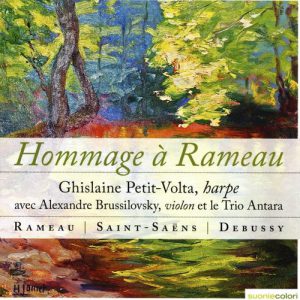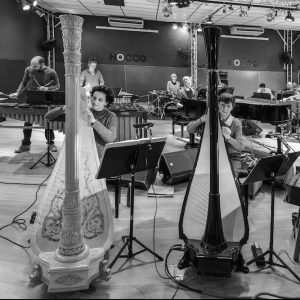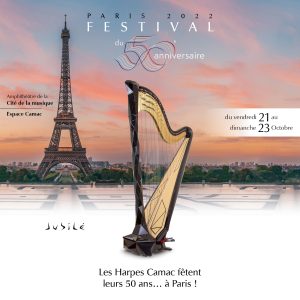Camac Blog
“Correspondences that touch the very essence” : Trio Antara and Concert pour Debussy
News
September 12, 2024
On Friday 13 September 2024, the latest recording from Trio Antara (Emmanuelle Ophèle – flute, Odile Auboin – viola, Ghislaine Petit-Volta – harp) will appear on the Paraty label. With the collaboration of composer and arranger Benoît Sitzia (b. 1990), the group explore a crepuscular sound world that captures, crystallises and enlarges upon that created by Debussy in his seminal sonate. Not only through that uniquely dusky combination of instruments, but by drawing links between the claveciniste music that so inspired that composer in his final cycle of instrumental sonatas.
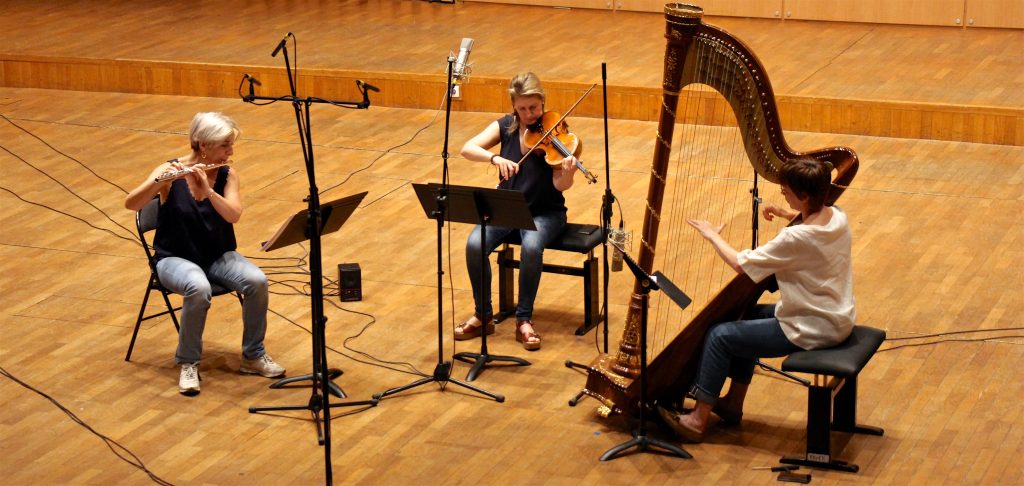
Trio Antara (Emmanuelle Ophèle – flute, Odile Auboin – viola, Ghislaine Petit-Volta – harp) Photo: ©Jean-Marc Volta
In doing so, Sitzia and Trio Antara present the rich and fantastical worlds that characterise Debussy and his contemporaries and connect them to Rameau. The result is a magical sense of story telling; a journey into the world of Pan, and of fauns, great birds, the sound of guitars in Spanish gardens, of longing for that which is past and perhaps long-gone.
Nowhere is this more evident than in Sitzia’s breathtaking adaptation of Debussy’s six epigraphs, in a reading so redolent of the mysterious and ancient that it is hard to believe that this was not the way in which Debussy had always envisaged these pieces.
The words of the group’s harpist, Ghislaine Petit-Volta, best draw together the magical elements that constitute this truly remarkable record, a treasure trove of recorded music, that we highly recommend:
“The Concert pour Debussy recording project is the fruit of several years’ collaboration between the Trio Antara and composer and artistic director Benoît Sitzia. Debussy’s sonata for flute, viola and harp, a veritable workshop-laboratory for Debussy’s thought and poetics, allowed this chamber ensemble to flourish and pass into posterity, inspiring many new works since.
The first incarnation of this program dates back to October 2018, during a concert at the Bibliothèque nationale de France in honor of the centenary of the death of Claude Debussy (1918 – 2018).
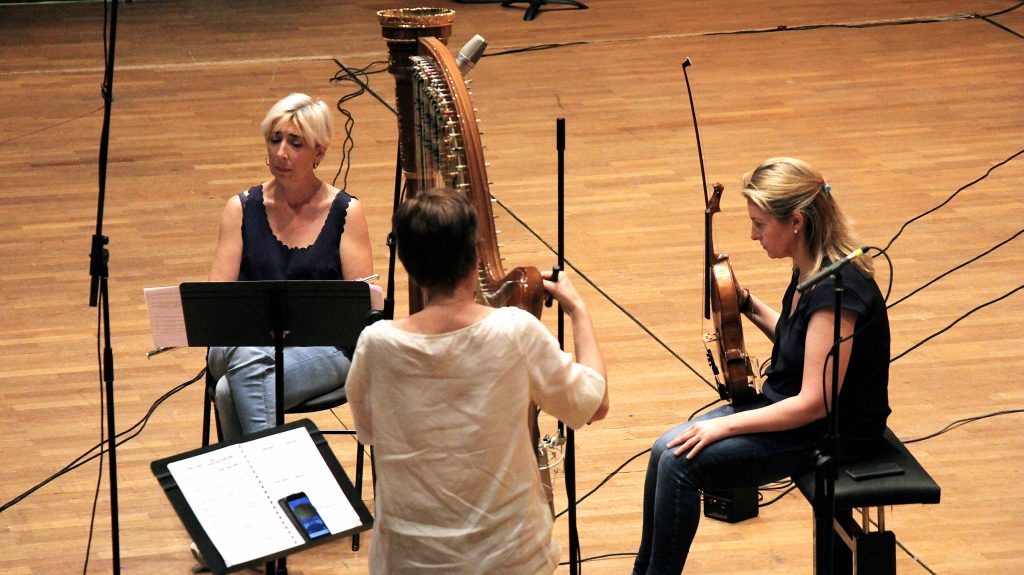
Trio Antara in a moment of repose during their recording, photo: © Jean-Marc Volta
The title then was: “Debussy, L’Echo d’une guerre” a multimedia project, a representation of Debussy’s thought and poetics in music, text and photos: it included letters from Debussy during the war, excerpts from Eric Vuillard’s book “La Bataille d’Occident”, and photos of reflections in the waters of the Creuse taken by Jean-Marc Volta (the poetics of water, a theme dear to Debussy). And already some of the works on the recording.
Incidentally, the CD cover photo is not a painting, it’s one of the photos that formed part of this project [Photographs and illustrations for the booklet are by Jean-Marc Volta]. the project continued and was transformed into “Concert pour Debussy ”without his trio sonata. A program composed essentially of transcriptions made by ourselves or by French composer Benoît Sitzia, these transcriptions for our instruments present a reading of works by Jean-Philippe Rameau, Claude Debussy, Paul Dukas and Manuel de Falla.
A deep admiration for these works composed for other instruments presides over our choice and justifies this appropriation where the change of instrumental medium induces color transformations without ever detracting from the original text. If we consider that all musical notation is already a transcription, that of an abstract idea that only takes shape once the pen has taken hold of it, then the interpretation of this notation proposes yet another type of transcription.
These transcriptions of music originally composed for harpsichord, violin, viola da gamba, guitar or piano, offer us the chance to delve deeper into these works, as much as the opportunity to weave links, connections and correspondences that touch on their very essence.
The tribute to Claude Debussy is thus rendered here by the choice of composers and pieces presented, as much as by the highly original instrumental color derived from his Sonata for flute, viola and harp.”

